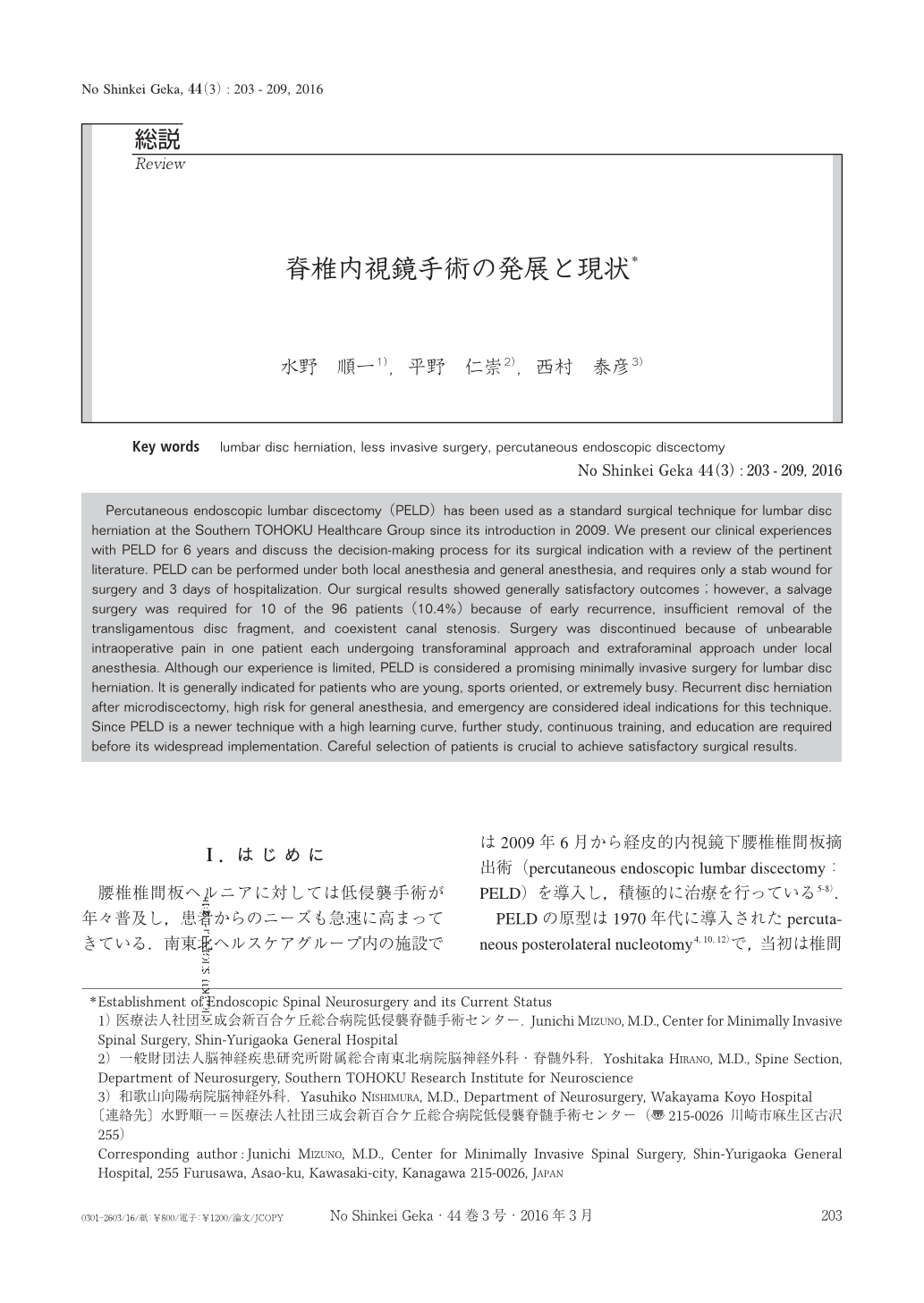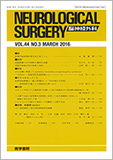Japanese
English
- 有料閲覧
- Abstract 文献概要
- 1ページ目 Look Inside
- 参考文献 Reference
Ⅰ.はじめに
腰椎椎間板ヘルニアに対しては低侵襲手術が年々普及し,患者からのニーズも急速に高まってきている.南東北ヘルスケアグループ内の施設では2009年6月から経皮的内視鏡下腰椎椎間板摘出術(percutaneous endoscopic lumbar discectomy:PELD)を導入し,積極的に治療を行っている5-8).
PELDの原型は1970年代に導入されたpercutaneous posterolateral nucleotomy4,10,12)で,当初は椎間板の中心部に対して減圧操作を加えるものであった.以後約40年間に手術手技が進歩し,現在はtargeted fragmentectomy3)と称し,健常な椎間板には侵襲を加えず脱出した椎間板ヘルニア塊そのものの摘出を狙う方法となっている.ここ数年,脊椎脊髄外科領域においてPELDが認知されるようになってきている一方,未だにpercutaneous posterolateral nucleotomyと混同されることがしばしばあるが,現代のPELDでは健常な中心部分の椎間板組織はなるべく残し,将来の椎間板高減少や不安定性を予防し,術後に腰痛を併発するリスクを低減させることを企図している3).PELDにはtransforaminal approach9,14-18),extraforaminal approach2,9),interlaminar approach1,9,14,15)の3つのアプローチが主に用いられており(Fig.1),通常の顕微鏡下手術と同等の良好な成績が報告されている1-3,5-9,11,14-18).中でもtransforaminal approachはPELDの代表的な手技であり,脊柱管に後側方からアプローチし椎間孔内のsafety triangleから椎間板に進入できることが利点として特徴的である.
PELD導入当初はどの時点で手術を終了してよいかの判断が難しく,特に手術のend pointの判断について十分な理解に達することができず,通常の顕微鏡下手術と比較するあまり本法に対して懐疑的な印象をもつことも少なからずあったが,学習や経験を重ねるにつれ,どのような症例に本法が適するのか,徐々に理解できるようになった.筆者がPELDを初めて実施してから6年が過ぎた現在では,腰椎椎間板ヘルニアに対する標準的な外科的治療の1つとして選択肢に含まれるようになっている.本稿ではこれまでの自験例に照らし,現在抱えている問題点と今後の方向性について検討する.
Percutaneous endoscopic lumbar discectomy(PELD)has been used as a standard surgical technique for lumbar disc herniation at the Southern TOHOKU Healthcare Group since its introduction in 2009. We present our clinical experiences with PELD for 6 years and discuss the decision-making process for its surgical indication with a review of the pertinent literature. PELD can be performed under both local anesthesia and general anesthesia, and requires only a stab wound for surgery and 3 days of hospitalization. Our surgical results showed generally satisfactory outcomes;however, a salvage surgery was required for 10 of the 96 patients(10.4%)because of early recurrence, insufficient removal of the transligamentous disc fragment, and coexistent canal stenosis. Surgery was discontinued because of unbearable intraoperative pain in one patient each undergoing transforaminal approach and extraforaminal approach under local anesthesia. Although our experience is limited, PELD is considered a promising minimally invasive surgery for lumbar disc herniation. It is generally indicated for patients who are young, sports oriented, or extremely busy. Recurrent disc herniation after microdiscectomy, high risk for general anesthesia, and emergency are considered ideal indications for this technique. Since PELD is a newer technique with a high learning curve, further study, continuous training, and education are required before its widespread implementation. Careful selection of patients is crucial to achieve satisfactory surgical results.

Copyright © 2016, Igaku-Shoin Ltd. All rights reserved.


